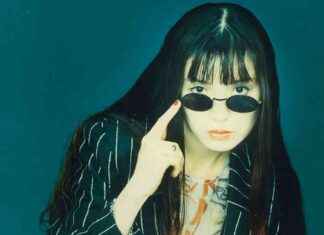As Carlos Godó Valls himself, Count of Godó, and president of the Real Club de Tenis Barcelona, ​​explained to Juan José Castillo in an interview in 1970, the Conde de Godó Trophy was born out of the sporting ambition of the entity to be able to see it in action in Barcelona to the great stars of world tennis. It was not an easy task.
In those years, tennis was not structured as a circuit. The tournaments, the majority under the control of the national federations, adapted their dates to the travel schedules of the players. Especially in Europe, a distant continent for the dominators of that time, mostly Australians and Americans, you had to be very attentive to how they planned their arrival in the Old Continent to play Roland Garros and Wimbledon.
Everything was even more complicated, due to the enormous importance that the Davis Cup had at that time, also without fixed dates on the calendar, and with many qualifiers also pending on the players’ agenda.
The task of attracting these world tennis figures to Barcelona fell mainly on the figure of Jaime BartrolÃ, a pillar of the club’s sports policy and, in those years, the one best related to the leaders and leading entities of the racket sport to international level. In view of the statistics accumulated in his career for the Conde de Godó Trophy champions in its first ten editions (1953 to 1962), BartrolÃ’s work, and the excellent organization of the RCTB, were impeccable.
The first 10 Conde de Godó Trophy champions won a total of 31 individual victories in Grand Slam tournaments and played 47 finals in the big four. The statistics are devastating. Obviously, the objective set by Carlos Godó Valls when the club decided to launch the tournament to commemorate the transfer of its headquarters to the current facilities had been more than fulfilled.
The American Vic Seixas, the first winner in Barcelona in 1953, and the living Grand Slam champion, about to turn 100, conquered Wimbledon three weeks after his victory at the RCTB and the US Open in 1954 His successor in Barcelona, ​​also American Tony Trabert, was crowned champion of the US Open in 1953, Roland Garros in 1954, and in 1955 he was one step away from achieving the Grand Slam after winning the US Open, Roland Garros and Wimbledon .
In 1955, the streak of American victories in Barcelona continued with the triumph of Art Larsen, champion of the US Open in 1950. His compatriot Herbert Flam, winner in 1956 and 1957, is the only one of the champions of the first ten editions of the Conde Trophy de Godó without a Grand Slam title, although he played in the finals of the US Open in 1950 and Roland Garros in 1957. The Swede Sven Davidson in 1958 broke the streak of American successes in the RCTB, and did so as Roland Garros champion the year former.
The period of dominance in Barcelona for Australian tennis players began with Neale Fraser in 1959, the year in which the Aussie was crowned in Forest Hills, and a year later he repeated his victory at the US Open and conquered Wimbledon. The excellent relations of
RCTB with the Australian tennis federation, were one of the great triggers for the participation of its great figures in the competition.
Without a doubt, the most emotional moment of that first decade came in 1960, the year in which Andrés Gimeno, a benchmark for the entity, won the tournament before deciding to turn professional. It was the first time that TVE broadcast the final, with Carlos Pardo locution and in which, in addition to the Barcelona area connected by the signal emitted from Miramar, the stations of Zaragoza, Tortosa, Valencia, Madrid and Navacerrada were in direct connection.
And after the victory of Andrés Gimeno came the first of the successes of Roy Emerson, Australian and world tennis legend with his enormous baggage of 12 victories in Grand Slam tournaments: Australian Open 1961, 1963, 1964, 1965, 1966 and 1967 , US Open in 1961 and 1964, Roland Garros in 1963 and 1967 and Wimbledon in 1964 and 1965. Honored in 2011 by the club to commemorate the 50th anniversary of his first victory in Barcelona, ​​Emerson left the entity wrapped in tears of emotion for his stay in an unforgettable place for him.
And, as the culmination of that first decade, came in 1962 the first victory in the Conde de Godó Trophy for Manolo Santana, champion at Roland Garros in 1961 and 1964, the US Open 1965 and Wimbledon in 1966. That victory for Santana was the Supermanuel began an unforgettable relationship with what was, in addition to the Conde de Godó Trophy, the talismanic court of Spanish tennis with the great victories in the Davis Cup that led Spain to the finals of the silver salad bowl competition in 1965 and 1967.








